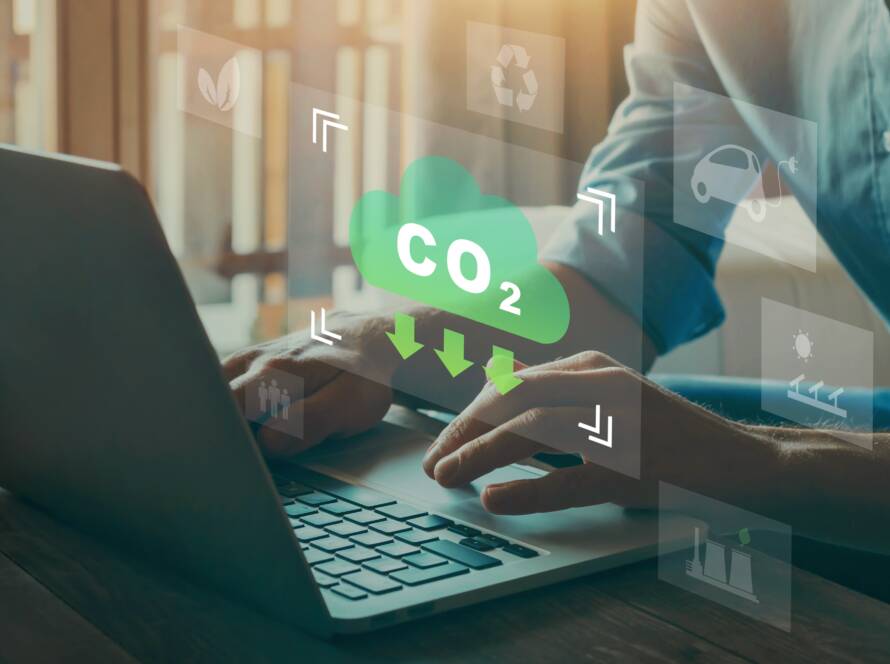In which areas of the HCO does freight transport affect a company?
Freight transport is an activity that affects all sectors with the exception of some service companies (e.g. digital services). From industries to local businesses, all require transport services to bring in their purchased raw materials (upstream transport) and/or to distribute their finished products (downstream transport). Emissions from these activities are accounted for in Scope 3 for most companies, unless the company reporting its emissions is the transport company itself or the company has its own fleet of vehicles. In the latter cases, emissions would be accounted for in scope 1 for combustion vehicles and in scope 2 for electric vehicles.
- Upstream transportTransfer of raw materials and components from suppliers to the production plant.
- Downstream transportDistribution of finished products from the production plant to distributors, retailers and end customers.
What are the factors contributing to transport emissions?
In order to quantify emissions from freight transport, it is essential to take several factors into account. These factors will enable companies to accurately monitor their emissions and develop decarbonisation strategies:

Some facts...
The CO2 emissions vary according to the type of transport. Figure A presents a comparison for a 100 tkm scenario, using "Average" vehicles for each category. In the case of road transport, a standard transport lorry has been used. As can be seen, air transport is the most polluting, with emissions more than 80 times those of maritime transport, more than 20 times those of rail transport and more than 5 times those of trucks (Source: Ecoinvent, July 2024).
Graph A

However, there are differences not only in the type of transport, but also in the vehicles used. Figure B compares transport by vans, which are commonly used for short distances. The data reveal that emissions vary according to fuel type. The petrol van ranks as the most polluting option, emitting three times more than a battery electric vehicle, twice as much as a hybrid and 30% more than a diesel vehicle (Source: DEFRA, 2024).
Chart B

Future Perspectives
Freight transport accounted for around 8% of global greenhouse emissions in 2018 (Source: International Energy Agency) and this is expected to double by 2050 as a result of growing demand from developing economies in Asia, Africa and Latin America. Despite the strong influence of renewables in the sector, almost all freight transport still relies on fossil fuels, mainly oil and gas. Without decisive action, freight transport will become the sector with the largest contribution to global emissions by 2050.
Multiple emission reduction strategies are being developed such as the adoption of modern engines, use of low carbon fuels, optimisation of loads... However, it is essential to accelerate this progress in order to achieve global climate targets and to prioritise the transformation of the sector in policy decisions.
It is not only time that is an obstacle on the road to emission reductions, the limited availability of low-emission alternatives also poses significant challenges for the sector. Investment in innovation and the implementation of effective policies will be key to overcoming these barriers and achieving a more sustainable future for freight transport.
Strategies for the Decarbonisation of Transport:
- Sustainable transport routesMinimise the use of air transport and prioritise sea transport for long journeys.
- Selection of efficient vehicles: Use low-emission vehicles such as electric vans and/or fuel-efficient vehicles.
- Route optimisationUse digital tools to plan more efficient routes to reduce distance travelled and fuel consumption.
- Load maximisationMaximise the carrying capacity of vehicles to reduce the number of trips required.
- Reduction of empty returns: Implement reverse logistics strategies and share transport with other companies to reduce empty runs.
- Eco-design of packagingOptimise packaging design to reduce weight and volume, using recyclable and sustainable materials.
Importance of emission assessment
The first step for a company is to measure the emissions from the transport of goods, considering as many factors as possible.
How much The more accurate the measurement and calculation, the greater the opportunities for the company to act and take effective reduction measures.
Did you know that in some autonomous communities it has been established as a specific requirement for
specific requirement in tendering processes to measure emissions from downstream transport?
emissions from downstream transport? This
trend highlights the growing importance of sustainability in the sector.
From ZirkelWe want to be part of the decarbonisation process,
helping companies to monitor and calculate their emissions from freight transport.
transport of goods. In addition, we offer advice on how to establish
sustainability strategies that not only comply with legal requirements but also improve operational efficiency,
but also improve operational efficiency.




